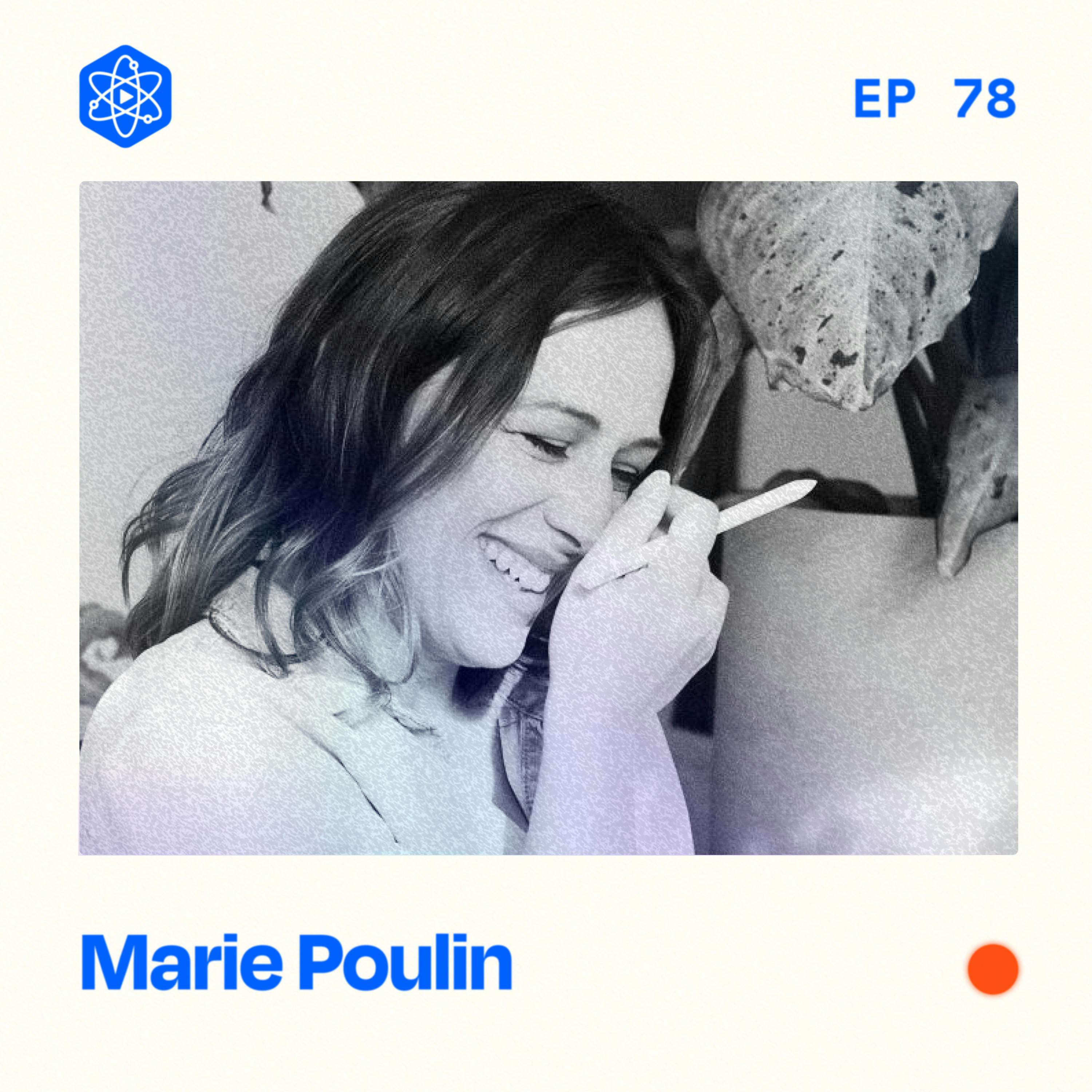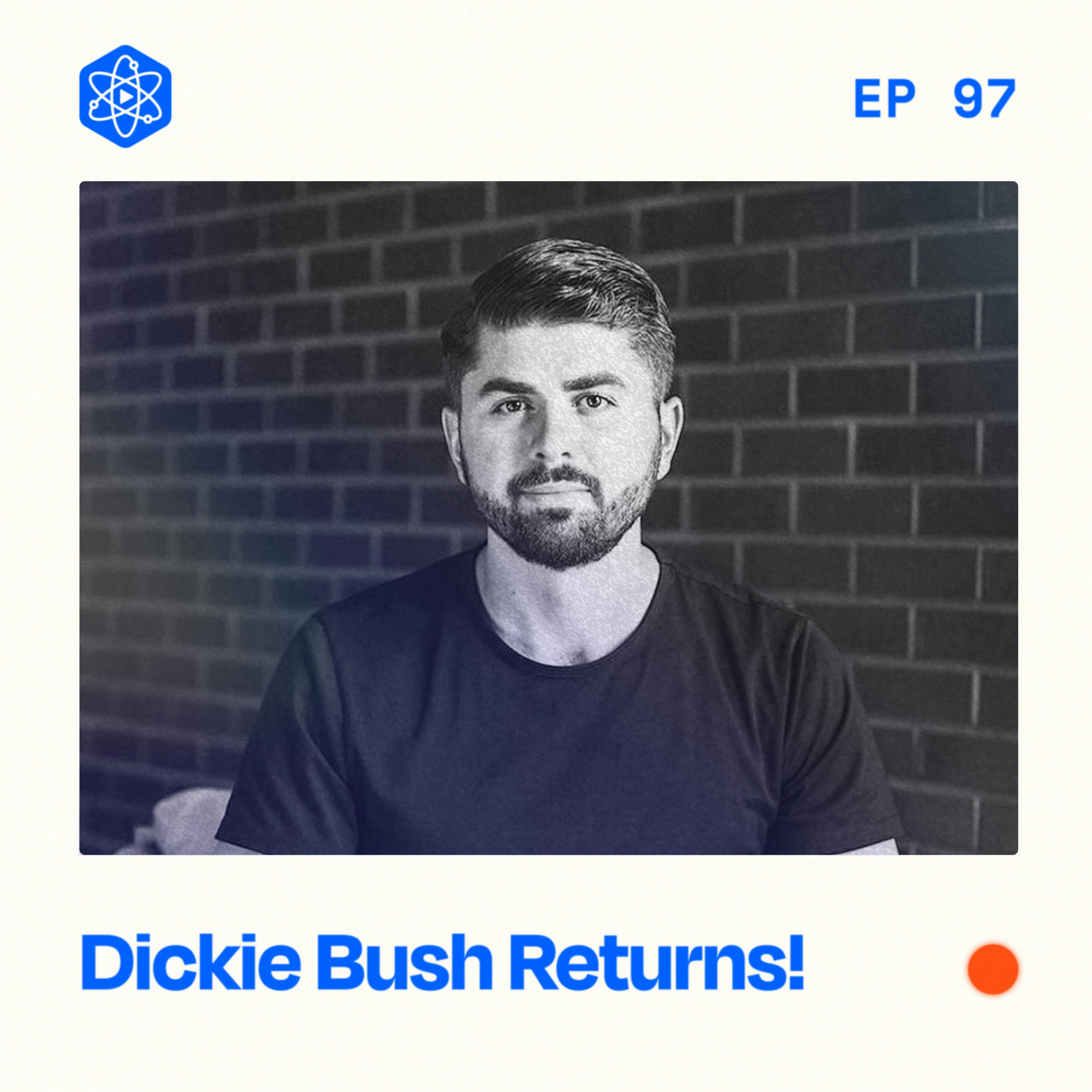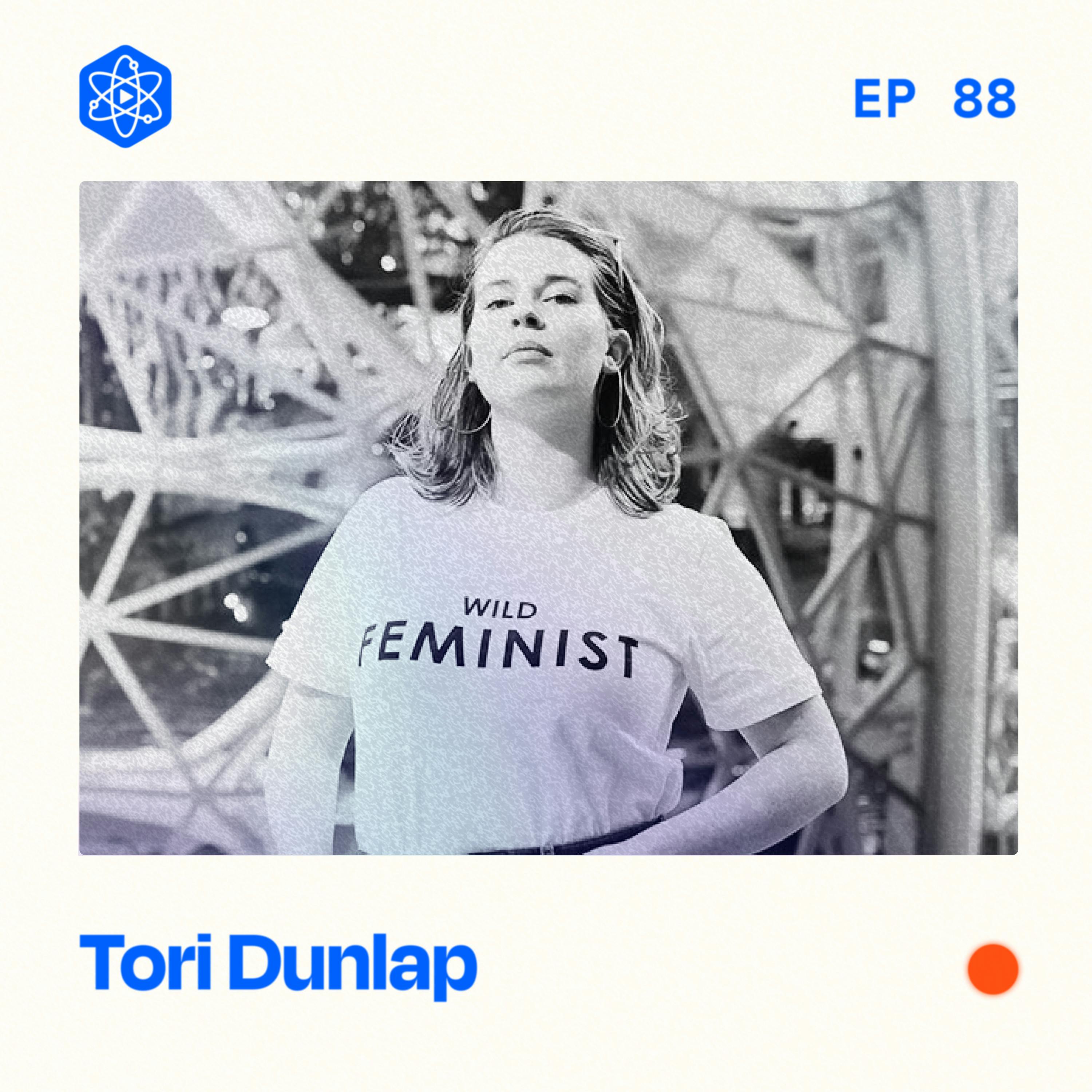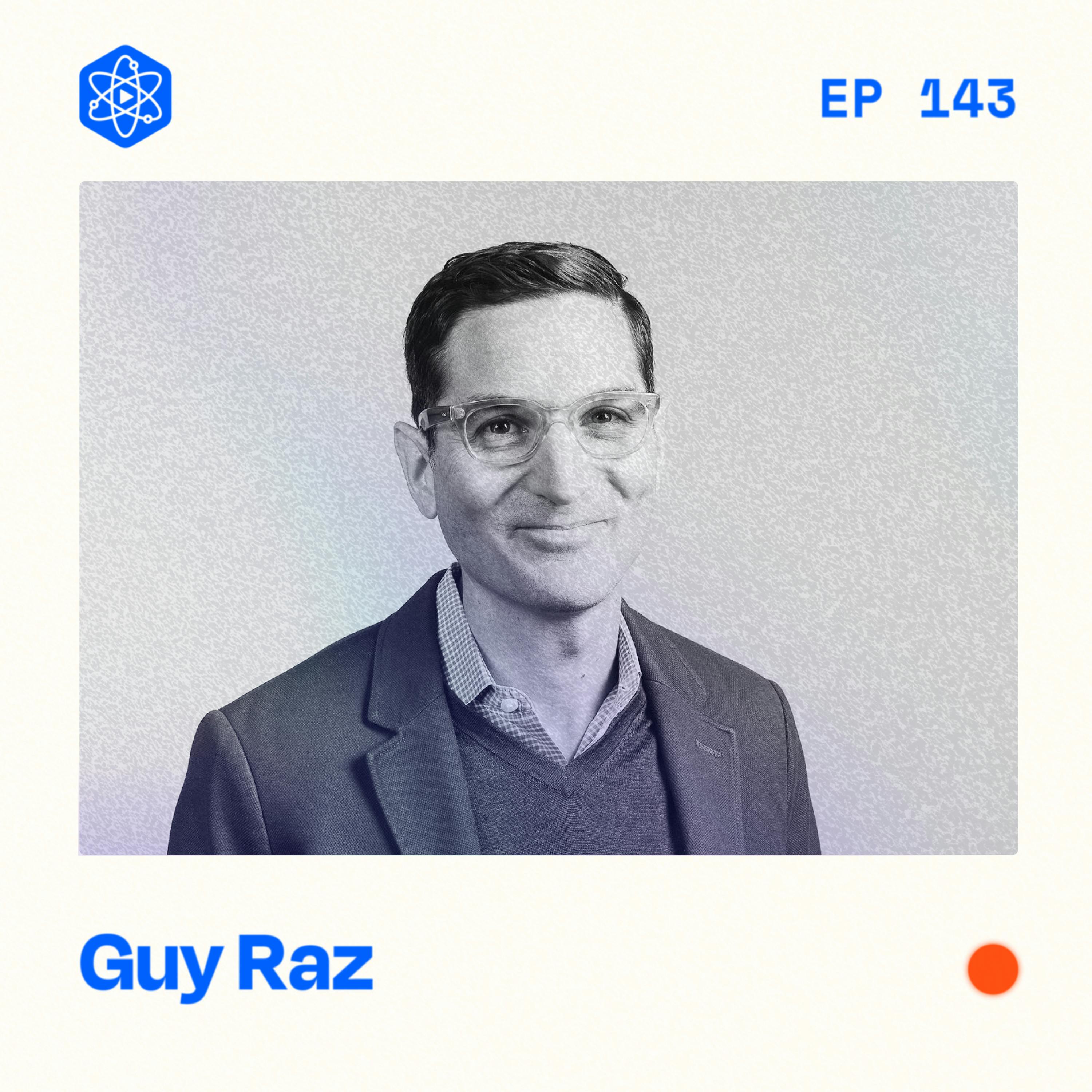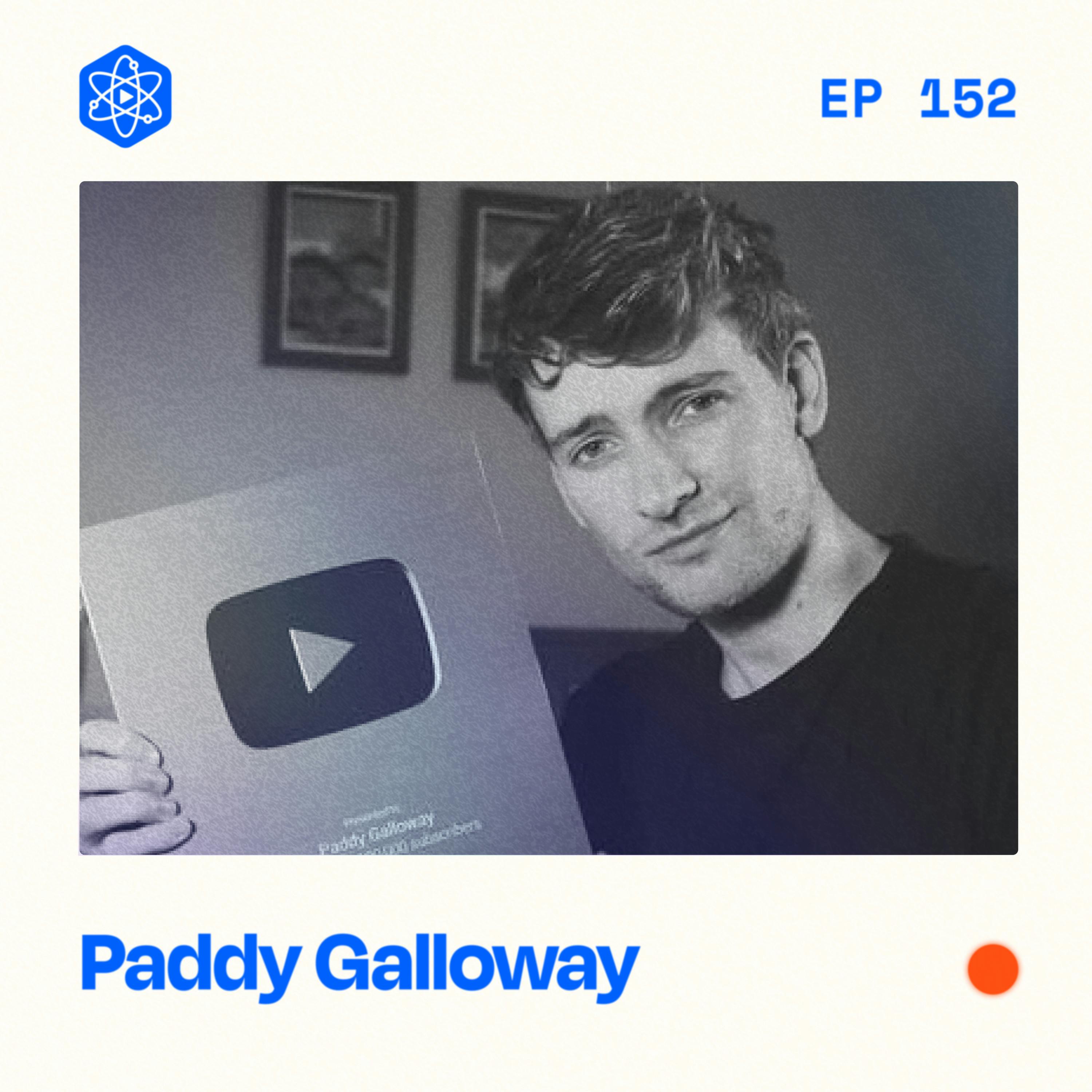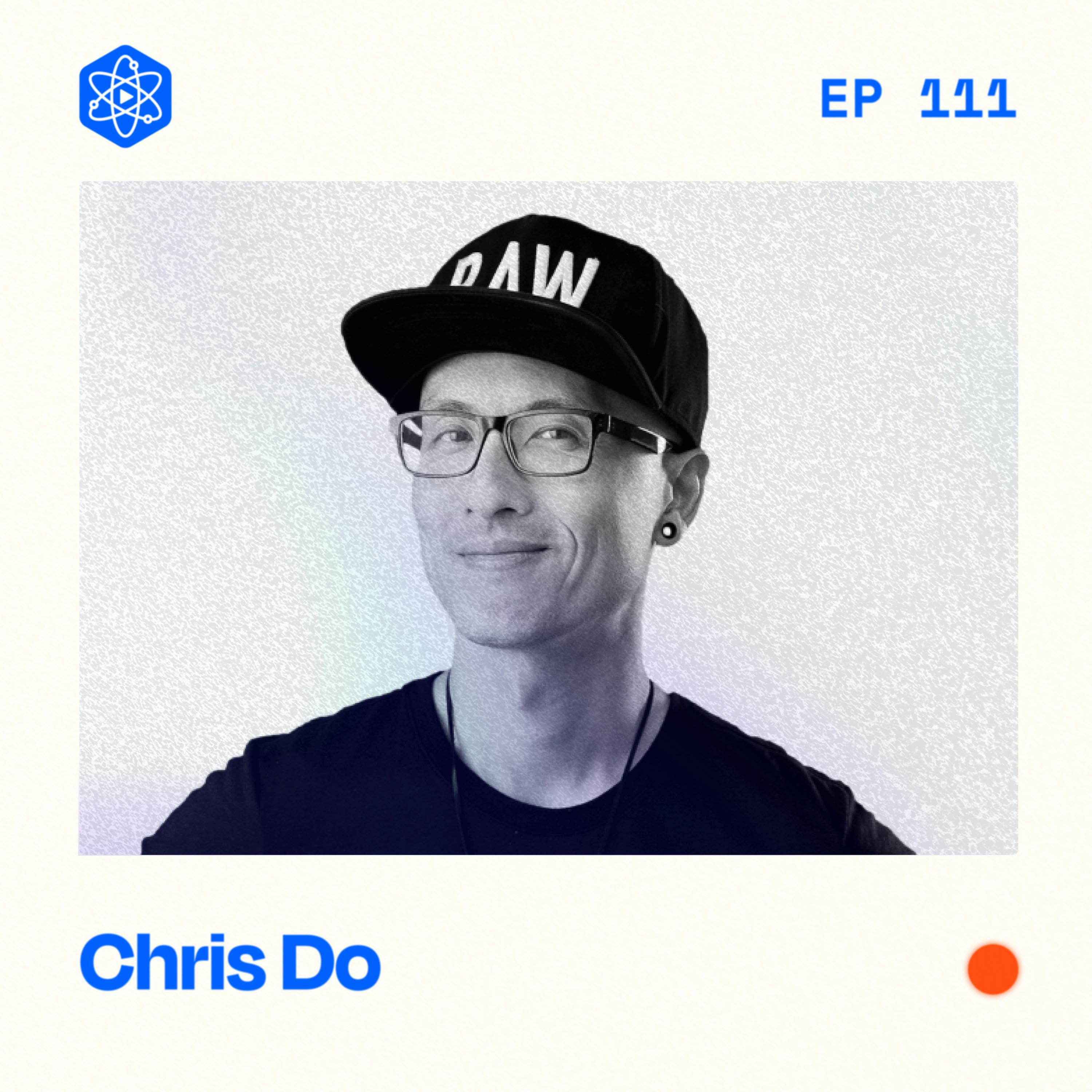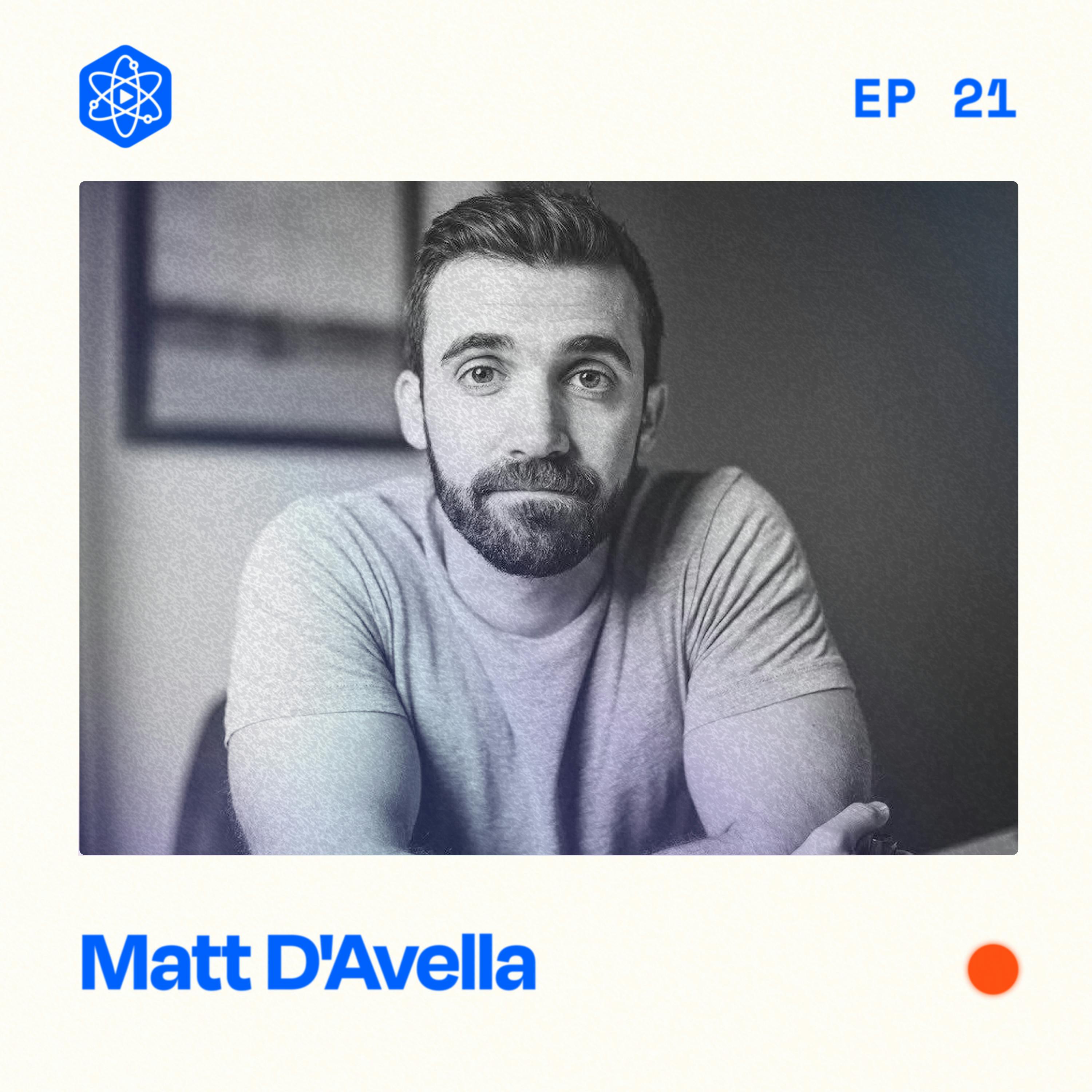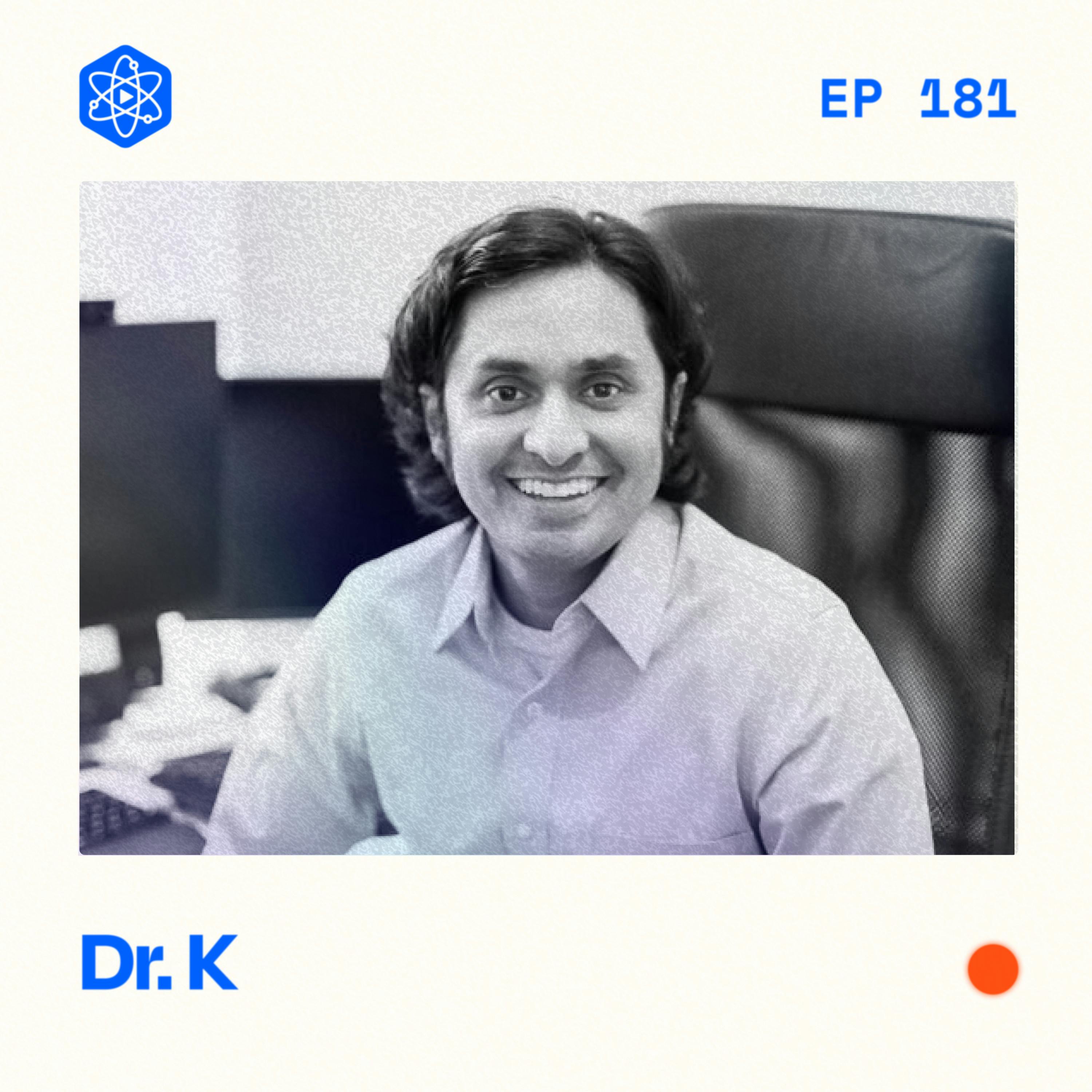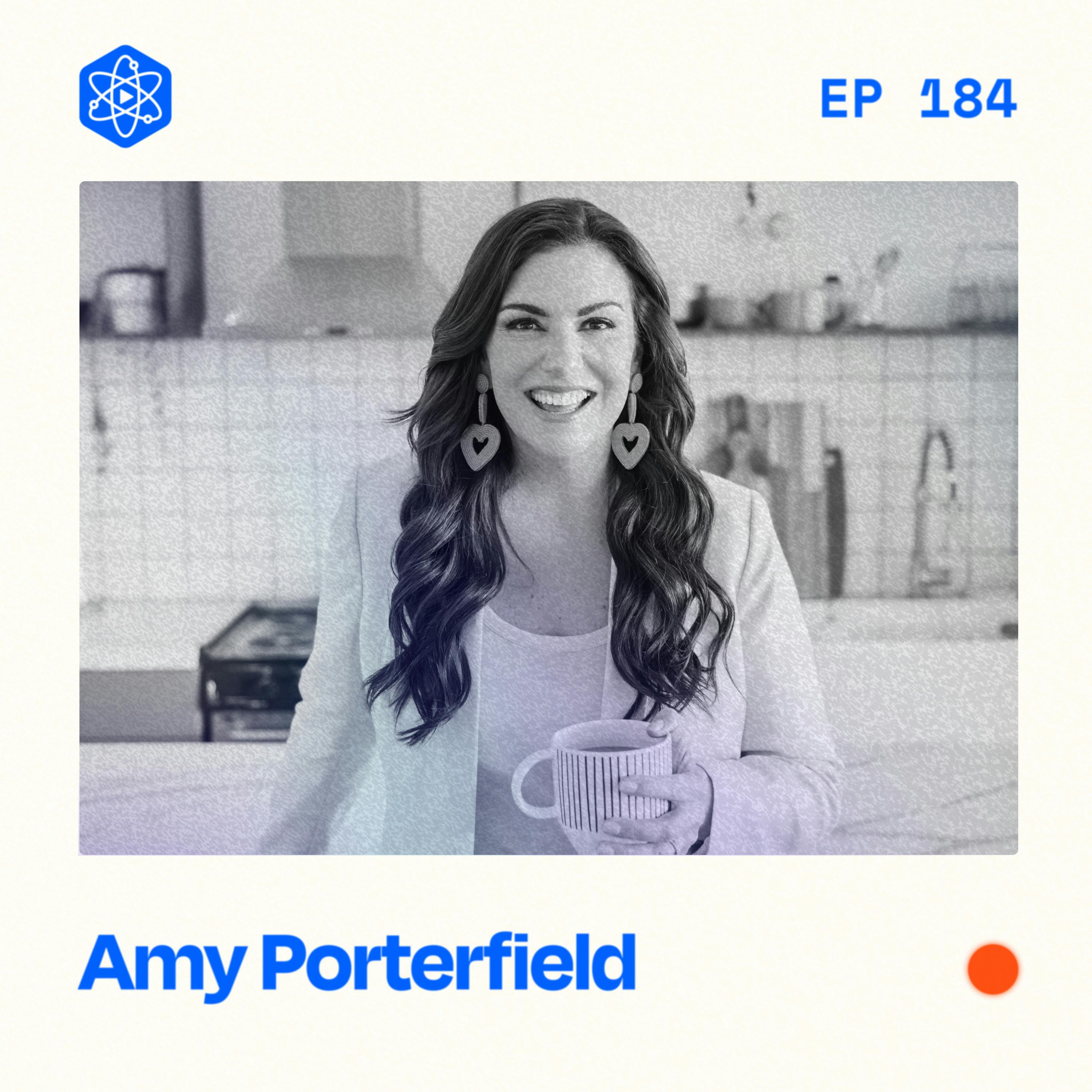Jon Youshaei is a former YouTube and Instagram employee and host of the Created podcast.
WATCH
▶️ Watch this episode on YouTube
***
EPISODE DESCRIPTION
Jon Youshaei is an ex-YouTube employee and one of the smartest creators on the platform right now and I’m not exaggerating.
He’s done just about 260 million views in the past year alone and it was not an accident. His strategy just works
So in this episode, you'll learn
- The best YouTube advice no one has ever told you
- The 1st Frame rule
- How Jon packages his videos
- And where there is still a massive opportunity for creators to find success
Full transcript and show notes
Jon's Website / Facebook / YouTube / Twitter / LinkedIn / Instagram / Community
***
TIMESTAMPS
(00:00) The Smartest Creator on YouTube
(01:07) Best YouTube Advice No One Ever Told You
(04:11) How to Build Your Variety Show
(08:14) 1st Frame Rule
(12:28) How to Find Your Niche
(15:19) Age is ACTUALLY an Advantage on YouTube
(17:10) The Dr. Mike-ification of YouTube
(18:26) Jon’s Packaging Process
(24:20) Why Content Formats are so Important
(27:12) You Should Start with Shorts
(28:54) Converting a Shorts Audience to Long Form
(33:33) The Future of YouTube
***
RECOMMENDED NEXT EPISODE
***
WHEN YOU'RE READY
🚀 Get CreatorHQ (creator operating system)
🧪 Join The Lab (private membership community)
***
CONNECT
***
SPONSORS
💼 View all sponsors and offers
***
SAY THANKS
Jon Youshaei [00:00:00]:
The question that every new creator should ask themselves is what does your variety show look like?
Jay Clouse [00:00:06]:
That's John Ushai, an x tube employee in one of the smartest creators on the platform right now. I'm not exaggerating. He's done about 260,000,000 views in the past year alone, and it was not an accident. His strategy just works.
Jon Youshaei [00:00:22]:
That brought about 2 to 3000000 views a day as started to take off as a channel.
Jay Clouse [00:00:26]:
In this episode, you'll learn the best YouTube advice that no one has ever told you.
Jon Youshaei [00:00:30]:
There's 2 types of creators. There's creators and players. The first frame rule, essentially, it's the extreme of, oh, the first three seconds matter that Evelyn has been saying for the past 5 years. No. No. No. Like, that is outdated advice.
Jay Clouse [00:00:43]:
How John packages his videos,
Jon Youshaei [00:00:45]:
what are thumbnails that I've come across on YouTube that I've clicked on, but did not know this creator at first.
Jay Clouse [00:00:51]:
And where there is still a massive opportunity for creators to find success.
Jon Youshaei [00:00:55]:
A lot of people like to talk about the mister Beastification of YouTube. I think one thing that a lot of people aren't missing is the doctor Mikeification of YouTube.
Jay Clouse [00:01:02]:
You might wanna take out a notebook for this one.
Jon Youshaei [00:01:07]:
The question that every new creator should ask themselves is what does your variety show look like? And I'm a big believer in this. There's 2 types of creators There's talk show creators and variety show creators. And if I can make this, like, analogous to pop culture, there's Colbert. There's Steven Colbert like creators and their James Corden like Creators. Some of you have talk shows where they give monologues like Stephen Colbert does. And if you go to his channel, I remember when I was at YouTube, I, like, had a chance to work with a lot of these folks, a lot of these top creators, celebrities, brands. And I remember the way Steven Colbert and his team approached their YouTube channel was so fundamentally different than James Cordon. And a lot of people can say, like, what can I learn from the these studio host, these networks, they're so much far off from, like, what a normal creator with very little money, like, has? But but there's a lot of fundamental principles. And if you look at, Corden, his channel is an entire variety show where he tries out all these different formats that are related to his focus And I think you should ask yourself, what are the different formats? What's the variety show look like for your niche? Can you marry your niche, but then vary your focus? And do that. And we could talk about how to do that, but do that through shorts to start and then get the permission to go long form.
Jay Clouse [00:02:21]:
Let's dig into this a little bit more because on the surface, you hear Gordon, you hear Colbert, and you think white guy with a late night talk show was the difference. They seem the same to me. What's what's the difference?
Jon Youshaei [00:02:32]:
The difference is that, you know, and and and I love them both, but, like, a Colbert creator doesn't vary their format. Doesn't vary their set. Doesn't really experiment as much as a new creator should. And I see that all the time. You know, a lot of people like, okay. I need to do explainer videos. Or I need to do interviews because that's what's been happening, on YouTube versus corden. He is really thinking about, like, all the different formats. And if you go on his channel, He has the ones that you know about, which are, like, the carpool karaoke's, but then he has, like, ones where he does crosswalk musical, which is literally, like, he does, like, a musical on the street. Or, like, lower five ones where he brings people on the audio in the audience and ask them a question while he has their mom on zoom behind him. Spit got fill your guts, which is basically a modern take on truth or dare, where if you answer a question, it's gonna be like a, like, a very, like, truthful moment. And if you don't, you gotta eat something disgusting. So all these different things. And the key that I think people don't realize, Jay, is that Not every format that James Gordon does is a success. Right? Not every format is a carpool karaoke. He also has format that totally bomb. And he has, like, formats like celebrity noses where he talks about, like, different celebrity noses, and most people haven't heard of that. But that's just part of the process. If if you don't not trying to have different formats and you're not embracing the ones that will bomb, you won't find the ones that will take off. And I think that's been the pendulum swing. And the things that really changed my channel is when I went from a Colbert creator to a corden style creator. In varying my formats and finding things that stuck. And that brought about 2 to 3000000 views a day as we started to take off as a channel just over a year ago.
Jay Clouse [00:04:11]:
Talk to me about how I can start doing this variety show, planning, and ideation without getting too overwhelmed.
Jon Youshaei [00:04:19]:
3% changes. That's the key. Like, don't overwhelm yourself. Like, you don't need to reinvent the wheel. In fact, I feel like if you're a new creator, If you introduce something so unfamiliar, people are gonna have a hard time wrapping their head around it. So think about a 3% change. And the reason why I say 3% change is because the late great Virgil Alblo talked about how creativity is essentially a 3% change from the familiar to the unfamiliar. Right? And then you keep tweaking, and that 3% change can be the way you market something. It could be the way, you know, the the topography looks, the design, etcetera. So, like, just to share, like, a personal anecdote and example to, put this into a practice, when I was really thinking about, like, how can I get my channel to be this variety show for the creator economy, for creator education? I looked at, like, late night again, like, late night talk show formats, like, from the past 30, 40 years, not just, like, from the past 5, 10 years. And I saw this format that Jay Leno, who was a talk show host for Jimmy Fallon and technically before Conan O'Brien where he went on the streets, and it was called jaywalking. And you just ask these people these questions that really show you, like, what the psyche of America is. And then I saw Jimmy Kimmel had this format where he, like, asked people, do you know more US presidents or Marvel Avengers? You know? And, like, the answers are really telling about, like, what Americans, like, followed. And so I was like, wait. I keep hearing the stat about how popular creators are. And this whole debate of traditional and social media, why don't I take that and make a format? And so so, essentially, what that led to is me going on the street and this took a lot of trial and error But, ultimately, the 3% change that I made was going on the street, holding up a sign where you saw a photo of Tom Cruise and Mister Beast, and I literally asked people who are these two people? And the results shocked me because a lot of people knew Mister Beese. They didn't know Tom Cruise. They didn't know Tom Cruise at the height of I think this is when Topgun malware came out. And and people and I I was like, wait. Let me, like, troll people and take this to an extent. So I went to the the Chinese theater here in Hollywood. I stood in front of the Top Gun Maverick sign with, like, like, Tom Cruise right there.
Jay Clouse [00:06:29]:
Like, I'm like, playing the movie there. Yeah.
Jon Youshaei [00:06:31]:
I was like, and and people like, hey. I don't know who that guy is, but that's mister Beast. You know, or or people would be like, oh, that's Tom Cruise. I don't know who that guy is. And same thing, Logan Paul and Tom Hanks. I think that Mr. Beast and Tom Cruiseland has 40,000,000 views now, but that really, kick started my channel. And then I was like, okay. This is starting to work. Let's make this format. And there's formats I did that did not work. Like, I could talk about the ones that bombed as well, but, that was a big 3% change. That led to a 100% change in my channel.
Jay Clouse [00:07:03]:
How do you know when you've given a format enough of a test to know whether it's going to work or not?
Jon Youshaei [00:07:10]:
Give it at least 5 videos. And that's a number I got from Matt pat Matthew Patrick. I did an interview with him where He, like, and he has 30,000,000 followers across 4 channels. And he talked a lot about, in our interview, like, how do you start a channel? He talked about this, like, rule of 5. Where you wanna try things out and really feel that. Because over the course of 5 videos in a specific format, you could tweak a lot of things that could give that format the actual chance it needs. So case in point, and this was for the short of the celebrity versus creators we're talking about. I would go there and, like, my initial versions of that video or, like, hey, guys. We're here in Hollywood, and we're gonna ask people, like, whether creators are more popular than celebrities. Like, here's the first one. And is this entire preamble that I was like, that is so boring and it's so unnecessary. So essentially, what I trimmed it down to is I went to FedEx Kinkos. I printed it out. I made a visual. I held up the 2 photos and asked, who are these two people? That's it. And that goes into another thing about how do you perfect the first frame where immediately people scroll, they see it, and they understand as much about the story as possible and you set up expectation and tension.
Jay Clouse [00:08:14]:
Say a little bit more about what first frame means if if folks are not familiar with that frame.
Jon Youshaei [00:08:19]:
Yeah. The first frame rule essentially is, I think, when it comes to short form content, you should be as obsessed with your first frame as thumbnails for long form content. And for the first frame is literally what you see at the 0 second mark when you come across a video for the first time. And, essentially, it's the extreme of, oh, the first three seconds matter that everyone has been saying for past 5 years. No. No. No. No. Like, that is outdated advice. Now you need to care about the first frame and I would even argue this extends a long form now with the autoplay. And I think visually is the key and doing it in a physical way, not just like digital. So one example is, like, of a version we tried that did not work is I didn't have a physical printout of the 2 faces of the creator versus celebrity. I just said it and I had a digital cut out of their heads. And so that one led to worse reactions in person because I had to, like, oh, no. Mister you know, the guy, like, who gives out free, like, all this stuff, I'd explain it versus, like, showing their face or Tom Cruise. And and then and then we added, like, the counter at the bottom. So immediately, you come across that short on my channel and you see, okay, there's a guy with a microphone. And by the way, I didn't do lavaliers. I was like, I want the physical microphone that shows I'm I'm asking. I'm gesturing literally to somebody else. So you know exactly what's the dynamic between those two people. I wanted me on camera. Because I wanted to show, like, like, I'm the audience. Like, like, I'm I'm, like, laughing. I'm I'm, like, having these genuine reactions. Like, you don't know who Tom Cruise is? Really? And so all of that is right there in that first frame versus building up to it, which is something that a lot of creators do. And I think it it's a huge mistake.
Jay Clouse [00:09:52]:
The nice thing about the first frame in shorts is that this isn't really, like, a produced graphic design asset after fact. Like, yeah. You gotta think about it, but this is coming from the a role as opposed to designing a thumbnail after the fact. It It alleviates some anxiety in me to know that it's it's yes. It's still kind of like the same mental exercise and step, but it could actually be less costly, a little less time intensive. So I like I like what your brings the table here, which is recommending a lot of this testing in shorts before doing long form, which is a new perspective that we haven't really had on the show yet.
Jon Youshaei [00:10:37]:
Yeah. And I would even go to another extreme is if you feel overwhelmed by video and believe me, I'm one of the biggest advocates and champions for trying video, start with text and photo. Like, post on LinkedIn, like, figure out what works there. And then you're like, alright. I feel more comfortable sharing a photo myself and some text. This is working. That that that feels like some of my audience wants. Then try short form. Oh, short form's working, then try long form. Like, I think people would jump into video sometimes too soon and overwhelm themselves. Text and photo is fine. Threads, Twitter, LinkedIn. Like, you know, all these things are fair game right now, and I feel like people overlook it because they're trying to make a long form 20 minute video, and that's just overwhelming when you're starting out.
Jay Clouse [00:11:17]:
After a quick break, John
Jay Clouse [00:11:18]:
and I talk about the limits of variety in your work. So stick around. We'll be right back.
Jay Clouse [00:11:25]:
And now back to my conversation with John Ushai. If I was just listening to this conversation so far, the takeaway might be a try a bunch of stuff, but that's not quite an accurate answer, I don't think. It sounds like, yes. You wanna try a bunch of stuff, but within a certain lane or window. Can you talk about that?
Jon Youshaei [00:11:45]:
That's right. You don't wanna have too much variety in your variety show. Otherwise, like, people don't really know, like, what you really stand for. If you haven't figured out your niche yet, I think the first thing to do before you get into varying formats is ask your audience. Like, really think about, like, what are the 3 to 4 things that you have pertise about. And there's so many great polling features on plat like, social media platforms today. And if you don't have a YouTube channel and don't have access to the community tab, use your LinkedIn, use your Twitter, use your Instagram poll, you know, even if it's friends and family, it's okay. This is what I used to do on my LinkedIn. I would every 6 to 7 months when I worked in Instagram and YouTube. I was trying to figure out what do I talk about? I would put up a poll that says, hey, guys. What what would you like me to make content about? And then by the way, it, like, makes people more interested in output if you bring them along the journey. And as your audience grows, I think every 10,000 20,000 followers. And then if you start hitting a threshold of, like, a 100,000, you could really bump that up. You should ask them again. And I I, like, if you follow me on Instagram, any of these, but I ask people so many questions. Do you like this thumbnail? I'm thinking about making this video. Here are the people I'm trying to interview. Here are the titles. I ask so many questions to my audience because You know, I I don't have all the answers. And, I think those answers, like, come together.
Jay Clouse [00:12:58]:
Okay. So before we can build our variety show, we need to know Who is my audience? What is the general, like, topic of conversation that I'm having with them? That I have expertise or at least earned insight to kinda talk about.
Jon Youshaei [00:13:13]:
Like, literally, I think about it as a Venn diagram. Like, you have expertise. The audience has something that they wanna know about. What's in the middle? Right? And the only way to really know that is like, yes. You could post a ton of content and see what performs well. That's gonna take a lot of time. Why not just poll them, ask them, and so many people get in their heads about, like, what works best? Like, should I talk about NFTs and cryptocurrency? Like, when that was taking up, should I talk about the creator economy and insert buzzword here? Like, Don't overcomplicate it. Just think about things that you know about. Ask your audience and then make content around the 1 or 2 things that gets the highest votes.
Jay Clouse [00:13:47]:
Yeah. And there's probably a period of experimentation here as well because we're all dynamic multi dimensional people. There's probably a couple or several things that you could feasibly, theoretically, talk about. So you could experiment in the beginning a little bit with the topic with the niche to see what feels best for you, what people like, but you probably wanna do that with the goal of narrowing in on one sort of lane and as to use your language marrying that niche so you can start varying the formats.
Jon Youshaei [00:14:19]:
Exactly. And then this is where I also I I have a hot take that A lot of people think that social media is a young person's game. I disagree. I think that age is a huge advantage. I did an interview with Jordan Madder who is the oldest YouTuber at fifty six years old with over 10,000,000 subscribers. I asked him this question. I was like, dude, like, how do you feel like you're you know, you're so experienced and seasoned. Let's use that word, in a world where, like, a ton of people are, like, teenagers coming up and say, you know, I had a career ver before YouTube. I had experience. I had expertise. And all I had to do was and and that's a big all I had to do, but I had to figure out a way to make it entertaining. So I think if you're listening or watching this and you're trying to figure out what should I even talk about, you probably have a ton of experience. Now you just have to make it, a, fit what people want, which you've pulled them about, or, b, like, making entertaining, which you know, it's half the battle versus trying to pick up a skill set, which I think a lot of people may not have when they're talking.
Jay Clouse [00:15:13]:
Yes. Yes. I completely agree with this. I could not be nodding my head more vigorously right now. We've bought a couple houses now. My wife and I, and every time we wanna do some sort of DIY project, we go on YouTube and find someone who's done this, And we are always clicking on the videos of the most dad like figures. There's one guy
Jon Youshaei [00:15:32]:
who taught
Jay Clouse [00:15:32]:
me how to skimcoat, and he was, like, wearing a kilt the whole time. And it was, like,
Jon Youshaei [00:15:35]:
the most
Jay Clouse [00:15:36]:
adorable, low fi video that had hundreds of thousands of views
Jay Clouse [00:15:40]:
because people are trying to learn this, and they're learning it from people that they trust to know it. You know, I see examples like this all the time. We think about, people like Andrew Huberman, who is seemingly blown up overnight, you know, quote, unquote blown up. Overnight, but why is that possible? Because he had decades of very specific experience learning something at the highest level before he started creating content. That's the key to his overnight success is, like, decades of unique earned insight.
Jon Youshaei [00:16:11]:
And and if I could go a step further, I'm I'm actually making a video about this. A lot of people like to talk about the mister Beastification of YouTube. I think one thing that a lot of people are missing is the doctor micification of YouTube. He's one of the first people who, like, went from the field of medicine started making YouTube videos about his profession and started taking off. I predict that there'll be many more professionals who start YouTube channels and we'll figure it out, and we're already seeing legal Eagle is a lawyer who has a channel with millions of subscribers talking about law. Dental Digest is a dentist talking about you know, the different, like, things that you should think about as a dentist, but also oral hygiene. And he has millions of followers. This is a big reason why I left my job at YouTube and Instagram. I'm like, why isn't there been somebody who has worked on the inside who can talk about this stuff on the outside with so much creator education going on? So I think if you're listening to this and you have a job and and you're like, you know, like, how do I fit in into this whole world and game of YouTube? The time is now in terms of just professionalism being valued more than ever. And we could talk about brand deals and how that translates as well to, like, negotiations and building a team, which just Yeah. Anyway, I I don't wanna get ahead of myself, but but, yeah, the doctor, my coification of YouTube, coining that term. I I think it's something that everyone should keep an eye out on.
Jay Clouse [00:17:27]:
Wanna talk a little bit about packaging. How do you approach packaging? When do you think about packaging? Take me in your process.
Jon Youshaei [00:17:36]:
So I think there's 2 types of packaging processes that we go through. 1 for interviews and 2 for explainers, which are solo videos around talk The ones for the solo videos are much clearer because I like to think about, okay, what is the visual? I really try to think visual first, and I have this entire, Like, just I I like to call this my thumbnail hall of fame where, like, I just have all these thumbnails that I look through where I'm like, okay. What are thumbnails that I've come across on YouTube? That I've clicked on, but did not know this the creator at first because there's something really powerful happening there where I am so intrigued by the visual of the packaging that I want to click on it even though I don't have a relationship or know who that creator is. Right?
Jay Clouse [00:18:19]:
Dude, that's so powerful. I'm literally going to create a thumbnail hall of fame after this video.
Jon Youshaei [00:18:25]:
Yeah. And I'm happy to share mine. If if anybody wants, I could I could DM, we're actually making it part of, like, our our newsletter. If you go to created dot news, it's something that will give, like, people, like, as, like, part of, like, signing up, I just add to it all the time. And starting to, like, categorize, like, what are the different, like, here's one that's really good for explainers. Here's ones that's really good for interviews. So I start off by just going through there and, like, saying, what's, like, a visual that really could make me wanna click and also speaks to, like, like, an idea that I have. So this is where I also have like, my notepad of, titles and headlines. For me, I'm really trying to put out a series of x YouTube employee explains something about, like, being a creator today that that could help them. So the one that really took off, I think it has 600,000 views. It's just me explaining, like, 7 tips of of how to really take advantage of the algorithm today. The next one we're working on is, like, ex YouTube employee explains how to be confident on camera. And I know a ton of people have done a video like that, but one, I feel like there's a lot of tips that haven't been put out, which which I'm surprised by. And 2, I feel like the way that the thumbnail can be packaged and the editing, is my is it can can be, like, done differently. And so I was like, just looking at different things, like, in this, like, thumbnail hall of fame of, like, okay. Like, if I want to, like, you know, talk about, you know, a way to just improve your, let me see. Yeah. Like, he I thought this was a really interesting thumbnail where it's like, okay. Somebody's like taking a photo or, like, taking a video and, like, money is coming up. Now this is not about, like, speaking confidently on camera, which, I like, it shows you the adaptation process. This is somebody, like, like, a camera is, like, money is going out. So it's more about monetization. But can you do something with, like, the person's face or the camera in front of them and, like, you know, like, volume, like, waves going out or something like that? That can speak to the speak confidently on camera, type of a visual that I'm looking for. So, anyway, so it's, when I think about packaging for that one, like, area of explainers and solo videos, it's really starting the process with looking at my notepad of ideas and titles and then looking at my notepad of Hall of Fame thumbnails, and just seeing if there's something there that I could adapt and literally have a clear vision of what it looks like to then, we we we have we have a couple designers on the thumbnail side that I could then brief them.
Jay Clouse [00:20:45]:
So are you saying that in the in the solo video side of things, Are you going visual to idea to filming, or are you going idea to visual to filming?
Jon Youshaei [00:20:55]:
It depends, but a lot of times visual to idea to filming.
Jay Clouse [00:20:59]:
Interesting.
Jon Youshaei [00:21:00]:
Which I know is is a little bit unorthodox because I I I like to think about it like this. A thumbnail, is, like, really, just like, a movie poster from a director you haven't heard of if you're a creator that's just starting out. And you have to make that mo movie poster really compelling, which, by the way, also, Jay, this, like, thumbnail hall of fame that that I have, like, it's not just thumbnails. It's like movie posters that I come across. I'm like, woah, that composition of what's going on there and the coloring, that's fascinating. Let me see if I could adapt it to YouTube. And and it's not to say this is like a set, like, process every time, like, visual versus, like, then idea then filming. Somebody that feels so passionate about the idea that I'm like, I'm gonna find a way to make it work, but I've always found it's, for better for worse, just harder to make the video and then think about visuals. Versus the other way around.
Jay Clouse [00:21:49]:
When you go from finding, like, a composition that you like to making a video around it, you're probably not coming up with a ton of different thumbnails for that video. You're probably starting with a thumbnail and having it pretty dial in and then building a video that pays that off.
Jon Youshaei [00:22:06]:
Yes and no. I think, like, the concept is pretty close to it. Like, another example I could give is for that ex YouTube employee explains or exposed to 7 ways to hack the algorithm. I think is the most recent title of that video on my channel. The initial concept was, I remember it when I was working at YouTube, we did this shoot with Casey Neistat for rewind. And, he was basically pulling the rewind, like, button. It was like this rewind button that just was on the red YouTube logo, and they're pulling out of his, like, jacket. And I was like, oh, that's really interesting. If I make a video like this, I could be pulling out, like, a Manila envelope of, like, secrets from my jacket. And, like, I got a red hoodie and and everything like that. But we made variations on that because I was like, okay. What's the background? Right? So if you look at it right now, I think it's our green branded coloring with a YouTube logo with me in front of it. But the variation that we tried out for this, and I put this on my Instagram and and we just got feedback before we got to this version was a graph going upward. So there's still ways that you could change a central visual. And there's other things. Like, I'm embarrassed to say, like, how many photos we took for that one shot to, like, land, like, a facial expression like that where There's other versions that are more extreme, more subtle. So even though the composition and the idea was there, we still tested different variations around it.
Jay Clouse [00:23:21]:
You've talked a a couple times about a series that you're creating. You know, you have the ex YouTube ex, employee explains x. Tell me more about what a series is in your mind and why you prioritize series versus, like, totally distinct long form videos.
Jon Youshaei [00:23:37]:
It gives somebody something to look forward to. And I think people, like, think about series as these overblown things, but I remember When I was at YouTube, I had a chance to visit the studios and sets of a lot of different creators, and the Fine Brothers really stood out to me when they said this one thing. And the Fine Brothers, if people aren't familiar with them, one of the first people to put react content. Like, they had channels that got, I think, over 20,000,000 subscribers was, like, elders react teens react, just them watching stuff, giving a reaction, and they had a lot of other formats beyond that. And they said this thing, which was, if we can't film 3 episodes in one day, we won't do it. And I'm like, what? Like, you you guys could do anything you want. You have such a big channel. Like, you, like, at that time, they're one of the top channels that on YouTube. And and I still think they're one of the most knowledgeable. The reason why it's because, you know, you need to have a series. You need to, like, plan it out, like, have a upload schedule, build a habit with your viewers. And then give them something to look forward to. And then e even I just did an interview with Smash, you know, they're just, like, bought their channel back. And they're one of the first, like, big creators and And and they talked about how a lot of their formats, like, you know, are just serialized because it helps their production cycle. And now that they're hiring and building their team, it allows them to slot talent in to those different things and understand what it is, but also make tweaks. So, you know, for my stuff, it just the short answer is it makes it more repeatable. And it allows me to understand, like, okay. What is the next thing on the slot into this format or at least tweak versus, oh, god. I have to start from scratch. Right? And so a lot of people listening. They're like, oh my god. I have to think of no. No. Again, just go back to what we were talking about 3% changes. Like, for me, the formats that we're trying out our ex YouTube employee explains. X Instagram employee explains. Like, I'm gonna be doing a series where I talk about Instagram tips from the perspective of somebody who work there Like, yeah, Instagram just launched this, but if you read paragraph 3 of that press release, what they really mean is this or, like, the on the street, you know, creative or celebrity, or we do, like, other formats, like, name that song where I pair play a popular song. And then I'm like, do people actually know who is behind this? Because I find, like, my theory is that a lot of, like, TikTok songs go viral, but people don't know the creator artists behind them. So just formats are important because they're repeatable. And that removes the friction from you creating.
Jay Clouse [00:25:53]:
And the other great thing about having a series is it really derisks the video in a way. Like, if you have a series that performs well, you have a pretty good reason to believe that the next video in that series will also perform well, which is great.
Jon Youshaei [00:26:04]:
Yeah. Yeah. And and then it'll be suggested against each other in the algorithm and just a lot of fits, but again, finding that format can take some time, which is why you got a very format, Mary Niche.
Jay Clouse [00:26:13]:
When we come back, John shares his perspective on YouTube shorts. You don't wanna miss this. So don't go anywhere. We'll be right back.
Jay Clouse [00:26:22]:
And now please enjoy the rest of my conversation with John Ushai. You think if I'm starting a channel right now in 2023, I should start with shorts.
Jon Youshaei [00:26:31]:
Yes. And and and that's that's for the majority of folks. The caveat is this. You wanna try to become a creator and really do it full time from the start, you have to have long form. Like, for me, when I left my job, I was like, you know what? I I'm starting a business. You know, I'm trying to hire. I'm trying to figure out, like, what are the formats? What who are the editors I could bring on? If you're just trying to figure out, like, okay. How do I do this on the side with my full time job and how do I do you risk it as much as possible, which is also what I tried to do? Like, I did a few long form videos when you know, I was working, like, my my day jobs, and I would even take vacation days to try to figure it out. But the majority of my following came from photos, text based of, post short form, even drawing cartoons and putting that out there. I'm so excited because we're we just soft launched my newsletter, which is we're putting cartoons out for creators, and each of those cartoons, are gonna be, like, with a lesson and Q and a people ask me. So so, yeah, short answer, short form if you're trying to figure it out while you have another job and, of course, doing it on your own time, your own equipment, etcetera. Let me
Jay Clouse [00:27:36]:
double click on the statement you said, which was if you wanna do this, full time to support you, you need to do long form. Unpack that for me. Why is that true?
Jon Youshaei [00:27:44]:
Long form, if you think about it from a brand perspective, is the way that like, you could drive value and conversion for them and also just the way AdSense works and mid roles and post roles and pre roles. Those are all things that work much more the the much more lucrative on long form than short form, though, short form is a great way to start. And revenue and and everything that YouTube has launched recently and these creator funds help with that.
Jay Clouse [00:28:08]:
Let's talk then about bridging shorts to long form. How do we leverage the success we find in shorts by doing our own variety show and turn that into long form. How do we get people over there?
Jon Youshaei [00:28:22]:
One is, again, marrying your niche and really making sure that what you're talking about in short is equivalent to long form. If I'm talking about, you know, I'm I'm trying to make creator education in shorts, I'm gonna keep that consistent with long form and make it creator education. I won't be talking about, like, real estate and mansion tours, like, on shorts and all of a sudden, like, doing a creator interview. Like, there's not a relationship there, that I think will cause people to go over. 2, it's just to know that, like, right now, like, it's gonna be it's gonna continue getting better. There is a tweet that I always reference when, like, people asking me this question about, like, yeah, what's the relationship between shorts and long form? It seems like 2 separate algorithms, should I start different channels, like, all this stuff? And I'm like, guys, it is in the best business interest and and having worked inside these, like, companies and and seeing the way they launch new features. At the end of the day, you wanna make it as easy as possible for the creator to have all the different formats on their channel and for that to be connected between a community post, a live, a short form, a long form, and you see that with what YouTube is doing. So so 2 is, like, I have faith that the platform is gonna be making this connection even stronger as you put out content. And then 3 is how can you have segments within your long form? That can be short form. And I'm not talking about just, like, something where it's like, okay. We we we did an interview, and let's find that best short form clip. Because that's something you should be doing. And there's a lot of great tools to do that. I should just signed on to become the creator ambassador of this company called Opus Clip. They're fantastic. You put in a link. It basically identifies, like, all these different things that all these different moments from the interview gives you the title, the description. And I think it's one of the best use case for AI, for creators. So you should be doing that. Anyways, because if you don't, like, people could be, like, clipping your content or you're basically not getting as much value as you could. But the thing I'm talking about is segments in your long form is how can you deliberately plant a short form in your long form? Here's an example. I was doing these interviews, I was like, there's such a moment, and maybe Jay, you've seen this as well. Well, our people talk about their income, how they make money as a creator. And I was like, you know what? That's a segment. And I created this segment called draw your income where, again, thinking very visually, I'd have a try a race board, wheeled out, we'd have a circle. And I just give him a pen and and and and markers, like, very kindergarten style and be like, just draw your income. Take me through the different slices of the pie of how you make money. And the intention of that was, like, create a segment in the show that people can look forward to, but also turn that into a very, very digestible short that can then lead to the long form. And so we've seen those have performed really well because it's a deliberate segment that we planned in long form, but also intended for short form. Yeah.
Jay Clouse [00:30:57]:
We're thinking about this in the channel right now. Something that we our our way of doing this, because we do remote interviews, there's a certain set of constraints here that we can't do super, super well. But if we're able to get better with graphics and animation and illustrate what somebody is saying, That is something that can be repurposed really effectively and not even just for short form on YouTube, and not even just for short form on tiktok or reals, but you can even clip that out and have that be something that's interesting for LinkedIn, Twitter. It's such a magical time to take video clips and put them anywhere because even LinkedIn and Twitter right now is prioritizing video content. 100%. I think that people have a little bit wrong when it comes to YouTube connecting shorts to long form. People seem to think it's a a YouTube problem that these things aren't connected better. But what seems to be my experience is it's just different viewer behavior. Like, people who like short form content don't always wanna watch long form content. And it's not that YouTube isn't making the connection to shorts viewer saying, hey. This person has a long form also. It's just a viewer behavior that if I, like, short form videos that might just be where I'm spending my video watching time. What do you think about that?
Jon Youshaei [00:32:10]:
I think, yeah, it's, the the people have different consumption behavior, but I think if you find a creator re you really like, Shorts is the beginning of the conversation and long form is where you go deeper with them. So I think people's behaviors can change depending on who the creator is.
Jay Clouse [00:32:25]:
Alright, man. Last question. I love asking people this question. What is something you have a hunch about or you believe to be true when it comes to, we'll say creating on YouTube? But you don't yet have data
Jon Youshaei [00:32:37]:
to support that YouTube can benefit
Jay Clouse [00:32:37]:
from more people who have had jobs
Jon Youshaei [00:32:45]:
coming into the creator world. And what I mean by that is there's so many ways to monetize today. You know, I find that the way we pitch brands, like, we were able to secure our first few brand deals before we had anywhere close to a 100,000 subscribers. And now we tried to, like, pre sell and and and just try to, like, warm all these relationships with brands. And I think a lot of that comes from my experience. I'm working on the inside, knowing how to put a deck together. Knowing what a marketing manager is looking for, knowing how to, like, balance a relationship and really, like, put that, above everything. So, again, I just go back to it, and I think if people are watching and thinking, man, it's it's it's hard for me to leave a job that I've had for the past 10 years. That job that you've had for the past 10 years maybe is your unique advantage. And everybody's in their own situation, but if you find a way to derisk it and it makes sense, like, I went for it, about a year or 2 years ago, and my wife is my business partner now. And we've able to build this business as a creator before our first, you know, first born Kim, like, just the other month. And, that was, like, the motivation that we needed. And I know people are at different times of their lives, but I'd really think that you're older and you've had experience, it's not a bad thing. And in fact, that actually could be a really good thing that could propel your career.








